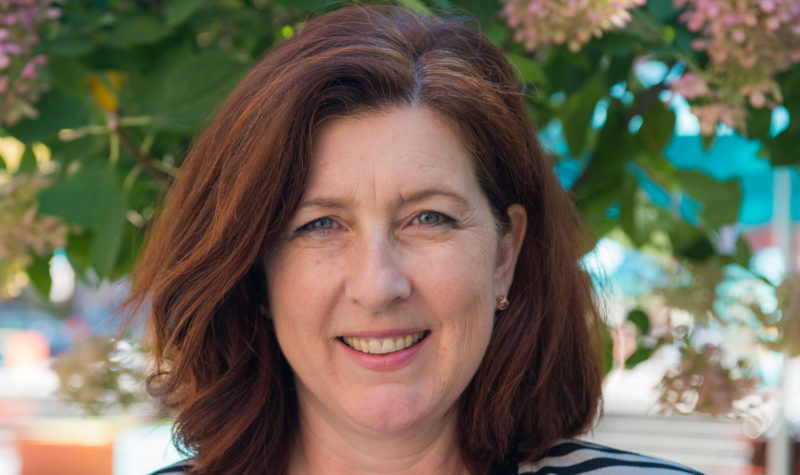Canada’s new Senior Arctic Official sees increased Arctic importance internationally

The Arctic appears to become increasingly important on the international scene, with climate change being one of the drivers and new stakeholders bringing resources and attention to the region, says Canada’s new Senior Arctic Official Alison Le Claire.
High North News had the chance to talk withLe Claire about a changing Arctic. Before becoming Canada’s Senior Arctic Official (and representative for Eastern Europe), Le Claire’s career with Global Affairs Canada took her to Brazil, Sweden, and Geneva. Her introduction to the Arctic came, in a certain sense, via her time in Brazil. After returning from her posting there in 1991 she was assigned, as a fairly junior desk officer, to be part of a team preparing for the 1992 Earth Summit. Le Claire continued on with this team after the Summit and, as it was situated in the environment division of Global Affairs, she worked on the combined portfolios of forestry and the Arctic.
While this was Le Claire’s first brush with the Arctic, she admits in an interview with High North News that her work on forestry demanded most of her time, as hopes were high at the time that an international forestry convention was on the horizon. This did not diminish her interest in the Arctic, however. Le Claire emphasizes that “The Arctic fascinated me then as it does now”, and that it was a particularly exciting time to be involved in the region: “It was post-Rovaniemi and pre-Arctic Council. It was in that time that the Arctic environmental protection strategy was growing, but so was the conversation about the Arctic Council.”
The Arctic then and the Arctic now
While Le Claire’s career path veered away from the Arctic following her introduction to the region, there is a certain consistency that allows things to be picked up where they left off. “Coming back to the Arctic many years later, however, a lot of the language and nomenclature is the same,” Le Claire highlights, “and this helped me get back in to it quickly.”
But this consistency does not mean that all is the same. It would be borderline tautological to list the many ways in which the governance of the region has developed and grown.
In her interview with High North News, Le Claire points to two key differences which she argues distinguish the Arctic of her early career from the one she is immersed in today. The first is the development of a broader understanding of sustainable development, one that values the contributions provided by northerners.
“What we see now with the Arctic Council is that sustainable development is a real part of the conversation. And not just sustainable development, but sustainable development defined in a fairly broad way. We’re looking at social as well as economic wellbeing and growing the respect for northerners — particularly Indigenous northerners — and what they bring to the table in terms of knowledge and skills.”
While seeing this tremendous growth in a positive light, Le Claire caveats this statement by acknowledging that there is still room to improve.
As for the second major change, Canada’s SAO stresses the difference in terms of the recognition of climate change—both as a phenomenon as well as its impact.
“Where [the conversation on climate change] was in 1991, and the recognition of it, is nothing like it is now. That has driven, and had an impact, on the sustainable development conversation which then links back to the livelihood of northerners.”
New players in the Arctic
When asked about the proliferation of new voices in Arctic forums, Le Claire emphasizes that in the case of the Arctic Council, Canada perceives the current situation to be under control.
“Our view is that it is manageable . . . when we’re talking about the Arctic Council, the concern is around observers, and they’re not at the table. The table remains the Arctic 8 and the 6 PPs.”
She also emphasizes that with a diversity of actors comes new benefits. These include a greater international awareness of the challenges facing the Arctic. It also includes the possibility that new actors in the Arctic bring with them resources and expertise that can help tackle the said challenges.
Will this diversity of new actors drown out the voices of northerners? Le Claire doesn’t think so, but rather emphasizes the opportunities they bring.
“Without wishing to sound overly optimistic, there is a way to have your cake and eat it too. A way to make the most of having these entities in the room, having the opportunity to engage in dialogue, and bring them in at the working group level. There is a way to do that without diluting the voices of the 14 that are already at the table.”
The change of guard in D.C.
Echoing Prime Minister Trudeau’s measured approach to talking about President Trump, Le Claire emphasizes the importance of the United States as a key ally in the region and the need to keep constructively engaging with them in the Arctic Council as well as other Arctic forums such as the Arctic 5+5.
“It’s important that we’re making the kinds of connections that are necessary to sustain the level of commitment to a cooperative management of this very important part of the world.”